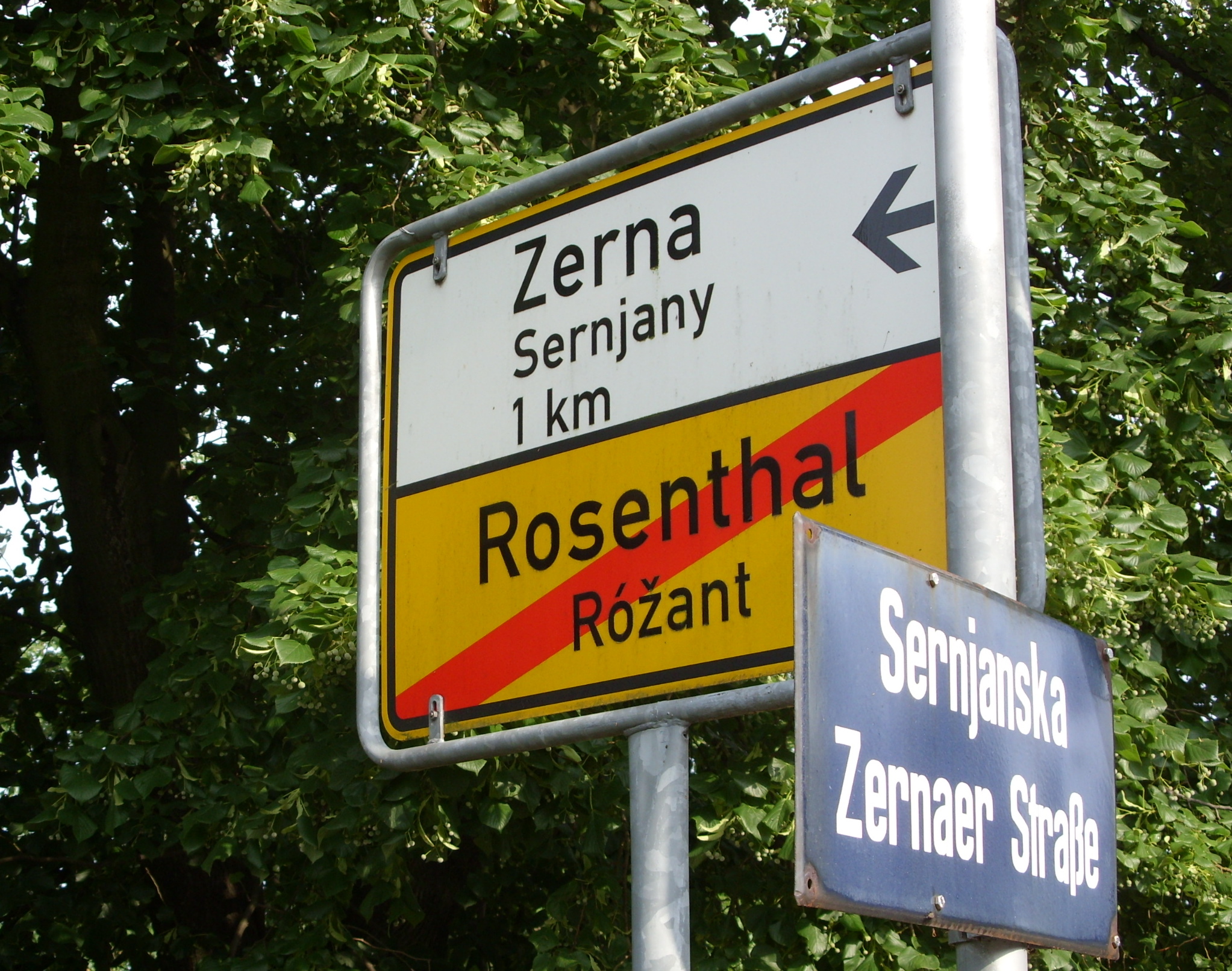|
Boxberg, Saxony
Boxberg (also: ''Boxberg/O.L.'' or ''Boxberg/Oberlausitz'', hsb, Hamor) is a municipality in the Görlitz district in Saxony, Germany. The place is known for its large Boxberg Power Station, that uses lignite as fuel. The municipality is part of the recognized Sorbian settlement area in Saxony. Upper Sorbian has an official status next to German, all villages bear names in both languages. In October 2007 it absorbed the former municipality Uhyst, and in February 2009 Klitten. Statistisches Bundesamt
The Federal ...
[...More Info...] [...Related Items...] OR: [Wikipedia] [Google] [Baidu] |
Görlitz (district)
Görlitz district (german: Landkreis Görlitz; Upper Sorbian: ''Wokrjes Zhorjelc''; cs, Zemský okres Zhořelec) is a district ('' Kreis'') in Saxony, and the easternmost in Germany. It is named after its capital Görlitz. It borders (from the west and clockwise) the district of Bautzen, the state of Brandenburg, Poland and the Czech Republic. History The district was established in August 2008 by merging three smaller districts: the district of Löbau-Zittau, Niederschlesischer Oberlausitzkreis (Lower Silesian Upper Lusatia district) and the urban district of Görlitz. Geography The district comprises the south-eastern part of Lusatia and the western part of Silesia, including parts of the Lusatian Mountains. The Lusatian Neisse forms its eastern border, and the Spree river flows through the western part of the district. Coat of arms The coat of arms of Görlitz district contains references to the various territories the district has been part of in the past. The blac ... [...More Info...] [...Related Items...] OR: [Wikipedia] [Google] [Baidu] |
Saxony
Saxony (german: Sachsen ; Upper Saxon: ''Saggsn''; hsb, Sakska), officially the Free State of Saxony (german: Freistaat Sachsen, links=no ; Upper Saxon: ''Freischdaad Saggsn''; hsb, Swobodny stat Sakska, links=no), is a landlocked state of Germany, bordering the states of Brandenburg, Saxony-Anhalt, Thuringia, Bavaria, as well as the countries of Poland and the Czech Republic. Its capital is Dresden, and its largest city is Leipzig. Saxony is the tenth largest of Germany's sixteen states, with an area of , and the sixth most populous, with more than 4 million inhabitants. The term Saxony has been in use for more than a millennium. It was used for the medieval Duchy of Saxony, the Electorate of Saxony of the Holy Roman Empire, the Kingdom of Saxony, and twice for a republic. The first Free State of Saxony was established in 1918 as a constituent state of the Weimar Republic. After World War II, it was under Soviet occupation before it became part of the communist East Ger ... [...More Info...] [...Related Items...] OR: [Wikipedia] [Google] [Baidu] |
Germany
Germany,, officially the Federal Republic of Germany, is a country in Central Europe. It is the second most populous country in Europe after Russia, and the most populous member state of the European Union. Germany is situated between the Baltic and North seas to the north, and the Alps to the south; it covers an area of , with a population of almost 84 million within its 16 constituent states. Germany borders Denmark to the north, Poland and the Czech Republic to the east, Austria and Switzerland to the south, and France, Luxembourg, Belgium, and the Netherlands to the west. The nation's capital and most populous city is Berlin and its financial centre is Frankfurt; the largest urban area is the Ruhr. Various Germanic tribes have inhabited the northern parts of modern Germany since classical antiquity. A region named Germania was documented before AD 100. In 962, the Kingdom of Germany formed the bulk of the Holy Roman Empire. During the 16th ce ... [...More Info...] [...Related Items...] OR: [Wikipedia] [Google] [Baidu] |
Boxberg Power Station
Boxberg Power Station (in German commonly referred as ''Kraftwerk Boxberg'') is a lignite-fired power station with three units at Boxberg, near Weißwasser, Saxony, Eastern Germany. Since the late 1990s, it has a capacity of 1,900 MW. In 2001, it was acquired by Vattenfall Europe, a subdivision of Vattenfall. The power station was sold by Vattenfall to the Czech energy group EPH and its financial partner PPF Investments on 30September 2016. History Like Jänschwalde Power Station and Schwarze Pumpe Power Station, Boxberg Power Station was built at a place surrounded by surface mines. The first unit was built in 1966, in the 1980s there were 14 units with an accumulated output of 3,520 MW. After the German reunification twelve units (210 MW each) went off, and two units, 500 MW each, were modernized. In the mid-1990s, a new 900 MW unit was built, another 675 MW unit is projected for the end of 2012. Size Boxberg Power Station had four chi ... [...More Info...] [...Related Items...] OR: [Wikipedia] [Google] [Baidu] |
Lignite
Lignite, often referred to as brown coal, is a soft, brown, combustible, sedimentary rock formed from naturally compressed peat. It has a carbon content around 25–35%, and is considered the lowest rank of coal due to its relatively low heat content. When removed from the ground, it contains a very high amount of moisture which partially explains its low carbon content. Lignite is mined all around the world and is used almost exclusively as a fuel for steam-electric power generation. The combustion of lignite produces less heat for the amount of carbon dioxide and sulfur released than other ranks of coal. As a result, environmental advocates have characterized lignite as the most harmful coal to human health. Depending on the source, various toxic heavy metals, including naturally occurring radioactive materials may be present in lignite which are left over in the coal fly ash produced from its combustion, further increasing health risks. Characteristics Lignite is brow ... [...More Info...] [...Related Items...] OR: [Wikipedia] [Google] [Baidu] |
Sorbian Settlement Area
hsb, Serbski sydlenski rum, dsb, Serbski sedleński rum, image_map=File:Sorbisches Siedlungsgebiet.png, subdivision_type1=Country, subdivision_name1=Germany, subdivision_type2=State, subdivision_name2=Saxony, subdivision_type3=State, subdivision_name3=Brandenburg The Sorbian settlement area ( dsb, Serbski sedleński rum, hsb, Serbski sydlenski rum, german: Sorbisches Siedlungsgebiet; in Brandenburg officially ''Siedlungsgebiet der Sorben/Wenden'') commonly makes reference to the area in the east of Saxony and the South of Brandenburg in which the West Slavic people of the Sorbs (in Brandenburg also called "Wends") live autochthonously. In colloquial German, it is called Sorbenland (Land of the Sorbs); before 1945 also – sometimes pejoratively – called ''Wendei''. This area was reduced constantly during the centuries due to assimilation, Germanization and strip mining lignite. Additionally, the identification as Sorb is free under federal and state law and cannot be verif ... [...More Info...] [...Related Items...] OR: [Wikipedia] [Google] [Baidu] |
Upper Sorbian Language
Upper Sorbian (), occasionally referred to as "Wendish", is a minority language spoken by Sorbs in Germany in the historical province of Upper Lusatia, which is today part of Saxony. It is grouped in the West Slavic language branch, together with Lower Sorbian, Czech, Polish, Slovak and Kashubian. History The history of the Upper Sorbian language in Germany began with the Slavic migrations during the 6th century AD. Beginning in the 12th century, there was a massive influx of rural Germanic settlers from Flanders, Saxony, Thuringia and Franconia. This so-called "Ostsiedlung" (eastern settlement or expansion) led to a slow but steady decline in use of the Sorbian language. In addition, in the Saxony region, the Sorbian language was legally subordinated to the German language. Language prohibitions were later added: In 1293, the Sorbian language was forbidden in Berne castle before the courts; in 1327 it was forbidden in Zwickau and Leipzig, and from 1424 on it was forbidden ... [...More Info...] [...Related Items...] OR: [Wikipedia] [Google] [Baidu] |
Uhyst
Uhyst (Upper Sorbian Delni Wujězd) was a municipality in the district Niederschlesischer Oberlausitzkreis, Saxony, Germany. Since 2007, it is part of Boxberg. It is located in Lusatia, and is officially bilingual (German and Upper Sorbian), as it is inhabited by the indigenous Sorbs. History A Catholic chapel was built by 1342. As of 1885, the village had a population of 451, and there was a Sorbian Lutheran school. Uhyst was renamed ''Spreefurt'' during the Nazi era, and regained its original name in 1947. The forester and poet Gottfried Unterdörfer lived and worked here from 1950 until his death in 1990. References External links * On the traces of Gottfried Unterdörferat Scribd Scribd Inc. is an American e-book and audiobook subscription service that includes one million titles. Scribd hosts 60 million documents on its open publishing platform. The company was founded in 2007 by Trip Adler, Jared Friedman, and Tikh ... Former municipalities in Saxony Boxbe ... [...More Info...] [...Related Items...] OR: [Wikipedia] [Google] [Baidu] |
Statistisches Bundesamt
The Federal Statistical Office (german: Statistisches Bundesamt, shortened ''Destatis'') is a federal authority of Germany. It reports to the Federal Ministry of the Interior. The Office is responsible for collecting, processing, presenting and analysing statistical information concerning the topics economy, society and environment. The purpose is providing objective, independent and highly qualitative statistical information for the whole public. About 2300 staff members are employed in the departments in Wiesbaden, Bonn and Berlin. The department in Wiesbaden is the main office and runs the largest library specialised in statistical literature in Germany. It is also the Office of the President who is also by tradition, but not by virtue of the office, the Federal Returning Officer. In this position, they are the supervisor of the elections of the German Parliament ("Bundestag") and of the European Parliament. The Berlin Information Point is the service centre of the Federal O ... [...More Info...] [...Related Items...] OR: [Wikipedia] [Google] [Baidu] |
Klitten, Germany
Klitten ( hsb, Klětno, ) is a village and a former municipality in the district Görlitz, Saxony, Germany Germany,, officially the Federal Republic of Germany, is a country in Central Europe. It is the second most populous country in Europe after Russia, and the most populous member state of the European Union. Germany is situated betwe .... Since 1 February 2009, it is part of the municipality Boxberg. External links * Former municipalities in Saxony Boxberg, Saxony {{Görlitz-geo-stub ... [...More Info...] [...Related Items...] OR: [Wikipedia] [Google] [Baidu] |
Boxberg, Saxony
Boxberg (also: ''Boxberg/O.L.'' or ''Boxberg/Oberlausitz'', hsb, Hamor) is a municipality in the Görlitz district in Saxony, Germany. The place is known for its large Boxberg Power Station, that uses lignite as fuel. The municipality is part of the recognized Sorbian settlement area in Saxony. Upper Sorbian has an official status next to German, all villages bear names in both languages. In October 2007 it absorbed the former municipality Uhyst, and in February 2009 Klitten. Statistisches Bundesamt
The Federal ...
[...More Info...] [...Related Items...] OR: [Wikipedia] [Google] [Baidu] |


.jpg)



